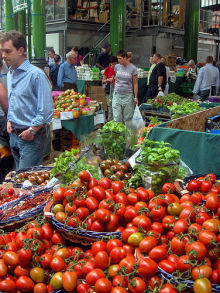 Image Credit: Davidbrain by Priyan Weerappuli
Image Credit: Davidbrain by Priyan Weerappuli
This best practice document is my find-of- the-week, a useful tool for the dietitian working with acute care stroke patients. The entire document (a summary of the full version) is worth reading but for quick reference, I've extracted the excerpts on nutrition.
--------------------------------------------------------------------------------------------------------------------------------------------------------
Recommendation 2.1 Lifestyle and risk factor management
Persons at risk of stroke and patients who have had a stroke should be assessed for vascular disease risk factors and lifestyle management issues (diet, sodium intake, exercise, weight, smoking and alcohol intake). They should receive information and counselling about possible strategies to modify
their lifestyle and risk factors [Evidence Level B] (AU, NZ, RCP, VA/DoD).
Lifestyle and risk factor interventions should include:
i. Healthy balanced diet: High in fresh fruits, vegetables, low-fat dairy products, dietary and soluble fibre, whole grains and protein from plant sources and low in saturated fat, cholesterol and sodium, in accordance with Canada’s Food Guide to Healthy Eating [Evidence Level B] (ASA, CHEP, RCP).
ii. Sodium: The recommended daily sodium intake from all sources is the Adequate Intake by age. For persons 9–50 years, the Adequate Intake is 1500 mg. Adequate Intake decreases to 1300 mg for persons 50–70 years and to 1200 mg for persons > 70 years. A daily upper consumption limit of 2300 mg should not be exceeded by any age group [Evidence Level B]. See www.sodium101.ca for sodium intake guidelines.
iii. Exercise: Moderate exercise (an accumulation of 30 to 60 minutes) of walking (ideally brisk walking), jogging, cycling, swimming or other dynamic exercise 4 to 7 days each week in addition to routine activities of daily living [Evidence Level A]. Medically supervised exercise programs are recommended for high-risk patients (e.g., those with cardiac disease) (ASA, CHEP, EBRSR, NZ).
iv. Weight: Maintain goal of a body mass index (BMI) of 18.5 to 24.9 kg/m2 and a waist circumference of < 88 cm for women and < 102 cm for men [Evidence Level B] (ASA, CHEP, OCCPG).
v. Smoking: Smoking cessation and a smoke-free environment; nicotine replacement therapy and behavioural therapy [Evidence Level B] (ASA, CHEP, CSQCS, RCP). For nicotine replacement therapy, nortriptyline therapy, nicotine receptor partial agonist therapy and/or behavioural therapy should be considered [Evidence Level A] (ASA, AU).
vi. Alcohol consumption: Two or fewer standard drinks per day; and fewer than 14 drinks per week for men; and fewer than 9 drinks per week for women [Evidence Level C] (ASA, AU, CHEP).
iii. Patients who are at risk of malnutrition, including those with dysphagia, should be referred to a dietitian for assessment and ongoing management. Assessment of nutritional status should include the use of validated nutrition assessment tools or measures [Evidence Level C] (AU). Also refer to recommendation 4.2e, “Components of acute inpatient care—Nutrition,” for additional information.
2.2a. Blood pressure assessment
iv. Patients with hypertension or at risk for hypertension should be advised on lifestyle modifications. [Evidence Level C]. Refer to recommendation 2.1, “Lifestyle and risk factor management,” for details on lifestyle modifications
2.3b. Lipid management
i. Ischemic stroke patients with LDL cholesterol of > 2.0 mmol/L should be managed with lifestyle modification and dietary guidelines [Evidence Level A] (AU, CSQCS, McPherson et al.,15 VA/DoD).
2.4b. Diabetes management
i. Glycemic targets must be individualized; however, therapy in most patients with type 1 or type 2 diabetes should be targeted to achieve a glycated hemoglobin (HbA1c) level £ 7.0% in order to reduce the risk of microvascular complications [Evidence Level A] (CDA) and, for individuals with type 1 diabetes, macrovascular complications. [Evidence Level C] (CDA).
ii. To achieve an HbA1c £ 7.0%, patients with type 1 or type 2 diabetes should aim for a fasting plasma glucose or preprandial plasma glucose targets of 4.0 to 7.0 mmol/L [Evidence Level B] (CDA).
iii. The 2-hour postprandial plasma glucose target is 5.0–10.0 mmol/L [Evidence Level B]. If HbA1c targets cannot be achieved with a postprandial target of 5.0–10.0 mmol/L, further postprandial blood glucose lowering, to 5.0–8.0 mmol/L, can be considered [Evidence Level C] (CDA).
Recommendation 4.1 Stroke unit care
Patients admitted to hospital because of an acute stroke or transient ischemic attack should be treated in an interdisciplinary stroke unit [Evidence Level A] (CSQCS, ESO, SCORE, SIGN 64).
ii. The core interdisciplinary team should consist of people with appropriate levels of expertise in medicine, nursing, occupational therapy, physiotherapy, speech–language pathology, social work and clinical nutrition. Additional disciplines may include pharmacy, (neuro)psychology and recreation therapy [Evidence Level B] (AU, SCORE, SIGN 64).
iv. Clinicians should use standardized, valid assessment tools to evaluate the patient’s stroke-related impairments and functional status [Evidence Level B] (ASA, RCP).
Recommendation 4.2 Components of acute inpatient care (new for 2008)
4.2e Nutrition
i. The nutritional and hydration status of stroke patients should be screened within the first 48 hours of admission using a valid screening tool [Evidence Level B] (AU, RPC, SIGN 78).
ii. Results from the screening process should guide appropriate referral to a dietitian for further assessment and the need for ongoing management of nutritional and hydration status [Evidence Level C] (NZ, SIGN 78).
iii. Stroke patients with suspected nutritional and/or hydration deficits, including dysphagia, should be referred to a dietitian for:
a. recommendations to meet nutrient and fluid needs orally while supporting alterations in food texture and fluid consistency based on the assessment by a speech–language pathologist or other trained professional [Evidence Level C] (AU, SCORE);
b. consideration of enteral nutrition support (tube feeding) within 7 days of admission for patients who are unable to meet their nutrient and fluid requirements orally. This decision should be made collaboratively with the multidisciplinary team, the patients, and their caregivers and families [Evidence Level B]. (AU, SIGN 78).
c. Also refer to recommendation 6.1, “Dysphagia assessment,” for dysphagia management.
Recommendation 6.1 Dysphagia assessment
Patients with stroke should have their swallowing ability screened using a simple, valid, reliable bedside testing protocol as part of their initial assessment, and before initiating oral intake of medications, fluids or food [Evidence Level B] (CSQCS, NZ, SCORE, SIGN 78).
i. Patients who are not alert within the first 24 hours should be monitored closely and dysphagia screening performed when clinically appropriate [Evidence Level C].
ii. Patients with stroke presenting with features indicating dysphagia or pulmonary aspiration should receive a full clinical assessment of their swallowing ability by a speech–language pathologist or appropriately trained specialist who should advise on safety of swallowing ability and consistency of diet and fluids [Evidence Level A] (CSQCS, NZ, RCP, SCORE).
Source: Canadian Best Practice Recommendations for Stroke Care: Summary (updated 2008)
Here are some related Web sites, documents & older posts that complement these best practice guidelines:
I must give credit & thanks to my good blogging friend & colleague, Kathryn Elliott, who piqued my curiosity about what I should be doing for & recommending to my stroke patients. Recently on Twitter she shared a link to new Heart Foundation of Australia's evidence based position papers and professional practice guidelines on nutrition and cardiovascular health. This prompted me to review and update my collection of practice resources and begin comparing Australian & Canadian recommendations. (I'm still in the middle of this compare/contrast exercise and will share my observations in a later post.)
 Thursday, July 23, 2009
Thursday, July 23, 2009 
 3 Comments | |
3 Comments | |  Permalink | tagged
Permalink | tagged  Resource round-up,
Resource round-up,  bone health,
bone health,  energy requirements,
energy requirements,  kidney disease,
kidney disease,  practice guidelines,
practice guidelines,  probiotics,
probiotics,  research,
research,  stroke
stroke 








